© 2026 ALLCITY Network Inc.
All rights reserved.

For a team sporting the least amount of five-on-five time in 2018-19, you could say special teams are important for the Colorado Avalanche.
In fact, Colorado’s performance with the man advantage and disadvantage is critical to their success next season.
Last year, the Avs’ power play ranked seventh-best in the NHL while their penalty kill finished seventh-worst. Offseason moves transformed the Avalanche lineup, but how were their special teams impacted?
The power play
Then: Goals, goals, goals
During a season in which they led the league in power-play opportunities (286), the Avalanche tallied 63 goals and converted on 22% of their chances. They ranked fourth in power-play goals behind the Tampa Bay super-team, Florida Panthers, and Stanley Cup finalist Boston Bruins. When compared to those all-star littered squads, the Avs should be pleased with their performance. However, there’s room for improvement until they take over the top spot.
Colorado won 21 games at home and only 17 on the road last season, but surprisingly maintained a 20.9% conversion rate at the Pepsi Center as opposed to 23.3% in opposing barns.
Power play time was split unevenly last season, to say the least. The top line plus Tyson Barrie played an average of four minutes per game with the man advantage to round out a clear first tier. Alex Kerfoot, Colin Wilson, Tyson Jost, Sam Girard, and Carl Soderberg all averaged close to two minutes while J.T. Compher split the difference with just over three minutes per game.

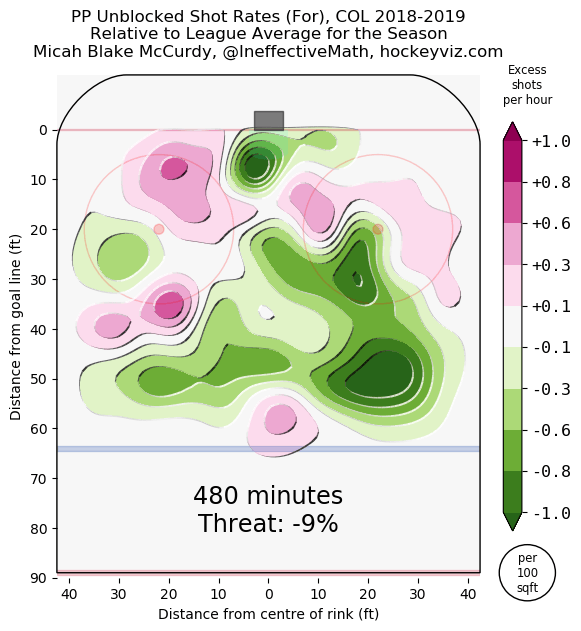
Now: Young blood
Key departures: Tyson Barrie, Alex Kerfoot
Key additions: Cale Makar, Nazem Kadri
In over 315 power-play minutes last season, Barrie took advantage of his chemistry with the big three and registered 23 points (all assists). NHL newbie Cale Makar will be expected to take over Barrie’s power-play role, but it’s unlikely that he replicates No.4’s efficiency in his first NHL campaign.
J.T. Compher will likely join Makar on the top unit, though Nazem Kadri could fill that position given his PP1 experience in Toronto.
Bednar will have an interesting choice to make. On the one hand, Compher has experience playing with Colorado’s number one group and recorded five assists on the power-play last season. Plus he’ll likely be fresh for extra time considering his limited role at third-line center.
On the other hand, Kadri put up nine assists as a mainstay on a Toronto power play featuring two natural centers in John Tavares and Auston Matthews. Therefore, playing out of position alongside MacKinnon and crew should be a smooth transition for the eight-year veteran.
While replacing Barrie’s power-play production may prove difficult for Colorado’s bench boss, Kerfoot can be easily substituted by some of Colorado’s skilled forwards. The Harvard graduate logged only the seventh-most average power-play time out of all Avalanche skaters last season with 2:05 per game.
But Kerfoot’s production was skewed by a late-season call-up. After an injury to Mikko Rantanen in late March, Kerfoot was asked to step up for PP1 minutes. In that time, he logged four of his 12 power-play points.
The mildly-used second power-play unit, where Kerfoot spent the majority of 2018-19, benefited from some valuable additions in the Avs’ busy offseason. Kerfoot’s replacement likely lies in newly-acquired Andre Burakovsky. The 6’3” 200-pound winger didn’t see powerplay time in Washington but can fill a shooting role on Colorado’s second unit.
The second center role, previously occupied by Carl Soderberg, will be filled by either Compher or Kadri; whichever player Bednar elects not to use on the top unit. Colorado’s PP2, led by newly extended Sam Girard, will be expected to take pressure off the top group. The Avs averaged almost seven minutes (6:59) of power-play time per game last season, and the top unit routinely took on more than four minutes of that time.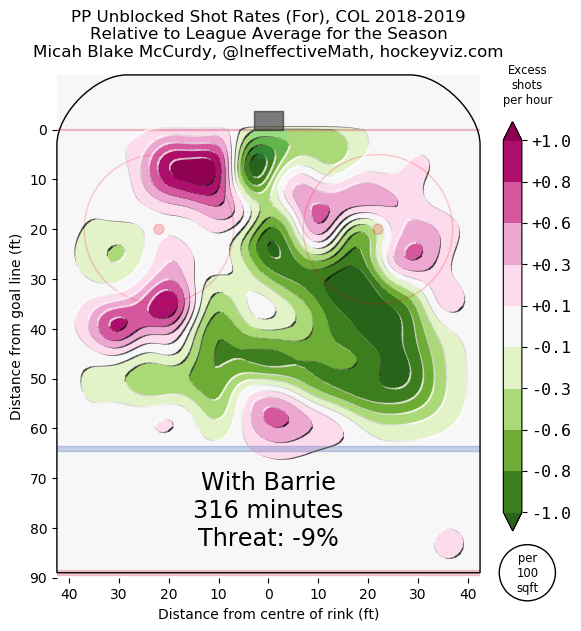
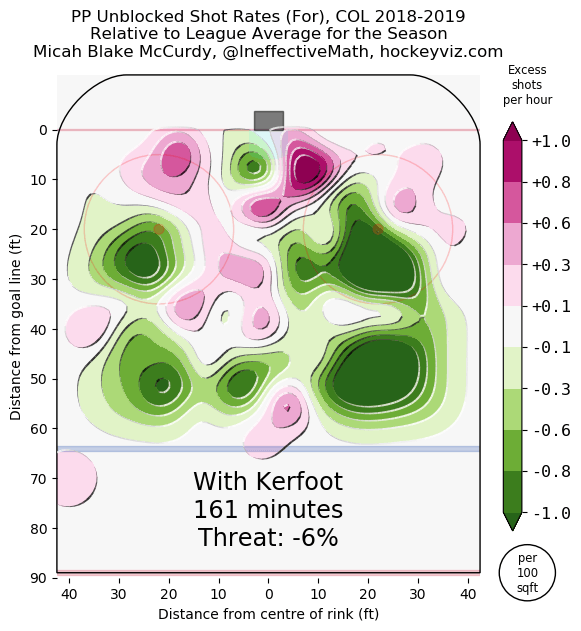
The penalty kill
Then: Old and ineffective
Colorado’s 25th ranked penalty kill led the NHL in shorthanded opportunities and allowed the fourth-most goals against last season. Led by a defensive pair featuring Erik Johnson and Ian Cole, the Avalanche killed only 78.7% of their penalties.
The now over 30-year-old players were most frequently joined by fellow defenseman Patrik Nemeth (27), who left for Detroit during free agency to earn a 2-year, $6 million contract. Nemeth averaged 3:13 of shorthanded time last season, comparable to Cole’s 3:17 and Johnson’s 3:06. Nemeth was the most effective penalty-killer of the three, forcing shots to the perimeter of the zone.

Cole and Johnson are known for their shot-blocking and their physical play, but not their mobility. Cole ranked second on the team in hits plus blocked shots, while Johnson ranked fourth. Despite sacrificing their bodies game in and game out, the two were ineffective at shot suppression.
Shot-blocking and hitting often disrupt opposing power plays, but active stick play leads to interceptions, clearances, and ultimately kills.
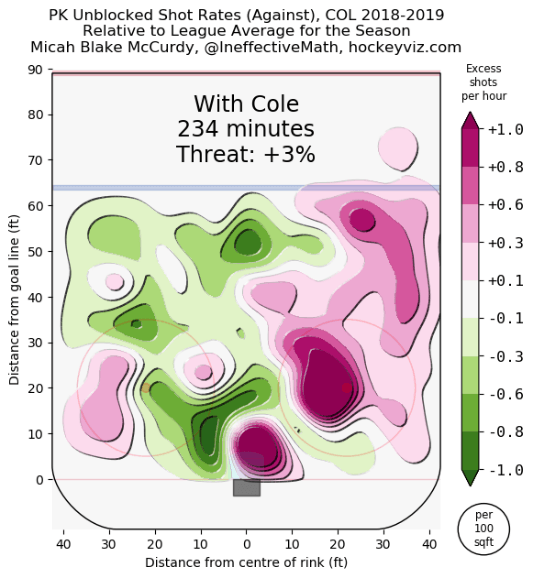

Matt Nieto, Gabriel Bourque, and Carl Soderberg frequented the man disadvantage as well, each averaging near two and a half minutes per game. While Bourque and Soderberg won’t be donning Avalanche sweaters next season, Nieto will see significant PK minutes in their wake.
The Long Beach, California native was one of Colorado’s most effective penalty killers last season and did so using his positioning and active stickwork. He cut passing lanes and kept high-danger shots from the low slot by pressuring opposing forwards. That defensive play will be needed come October on a penalty kill that may not have gotten any better this offseason.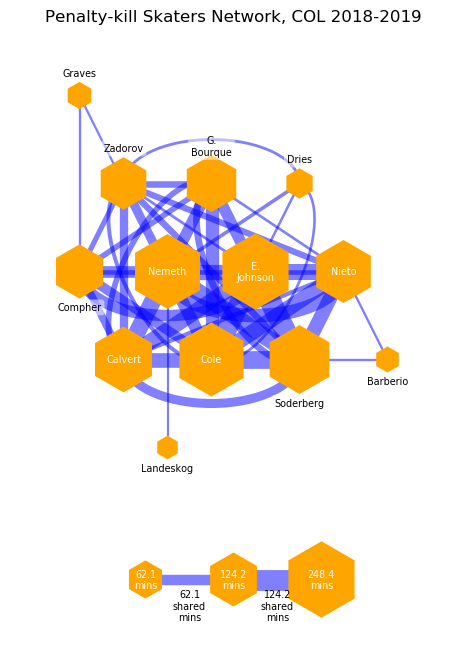
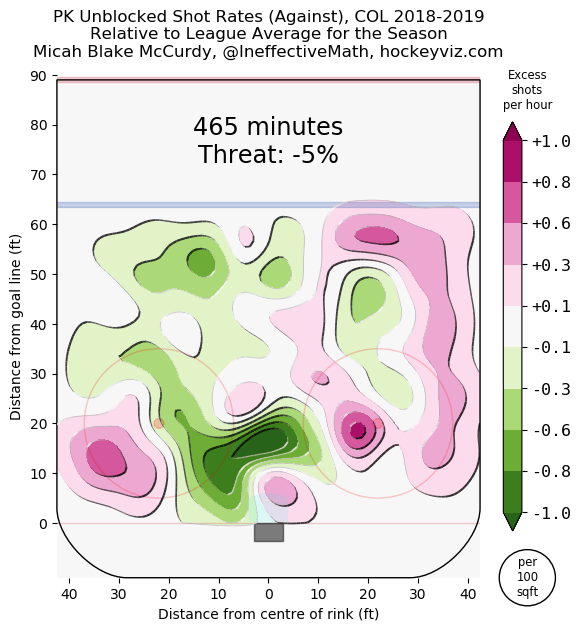
Now: Just as old and potentially less effective
Key departures: Carl Soderberg, Patrik Nemeth, Gabriel Bourque
Key Additions: Pierre-Edouard Bellemare, Kevin Connauton, Calle Rosén
The Avalanche penalty kill got immediately younger when Carl Soderberg was traded to Arizona in late June. The 33-year-old was Colorado’s most utilized center last season, averaging 2:29 in shorthanded minutes. He was fairly effective, but won’t be missed much on a bottom-feeding group. In return, the Avs got defenseman Kevin Connauton, who played big PK minutes for the Coyotes.
The youthful PK didn’t last long, however, with the addition of 34-year-old penalty-killing specialist Pierre-Edouard Bellemare. The former Vegas Golden Knight will provide stability on Colorado’s PK1. Bellemare played the most shorthanded minutes of all Knights forwards on a group that successfully killed 80.9% of their penalties (12th in the league). The French center will likely join Matt Nieto, Ian Cole, and Erik Johnson to round out the Avs’ top penalty kill.
But with Nemeth gone and both Cole and Johnson recovering from offseason surgeries, the Avs could have a defensive problem to start the season. While Johnson will likely join the lineup in the team’s first few games, Cole is expected to be out until December. During that time, an unproven penalty killer is going to be forced to step up.
Nikita Zadorov was left on the Avs’ second penalty kill last year, but the 24-year-old big man may be forced to jump up in Cole’s absence. Almost just as likely, however, is that one of the Avs’ plentiful bubble defensemen will occupy that spot. Barberio, Connauton, or even Rosén could prove valuable to Jared Bednar and crew as a shorthanded option. In fact, their ability to kill penalties may be the deciding factor for a third-pairing roster spot.
There’s one more blue-liner who could see an increased PK role next season. The newly-inked Sam Girard is getting paid the big bucks to be on Colorado’s future top pairing. That role includes killing penalties when your team is in need. On a team searching for shorthanded help, the Avs will likely test Girard in a PK role on the second unit. His play there could decide the makeup of Colorado’s defense as a whole.
Finally, J.T. Compher will again be called upon to aid Colorado’s special teams. The versatile center will likely lead the second penalty kill alongside Matt Calvert. On the back of two goals in the same penalty, Compher’s three shorthanded points tied for the team-best last season. Hopefully, the 24-year-old will take a step forward in the defensive end after a season in which his PK usage resulted in 15 goals against.
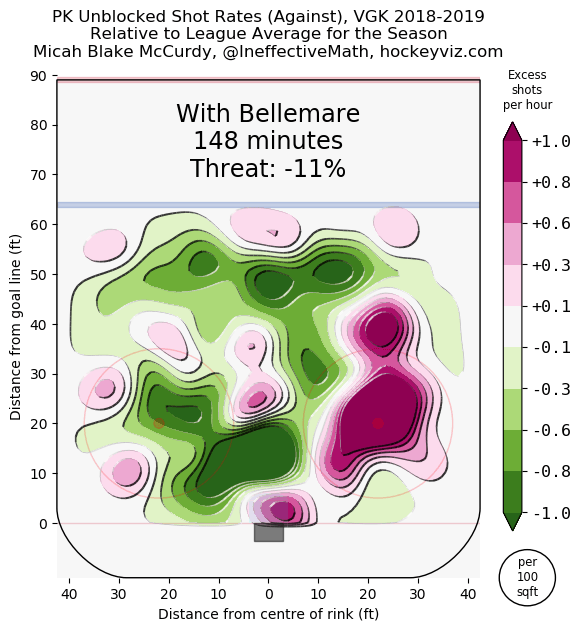
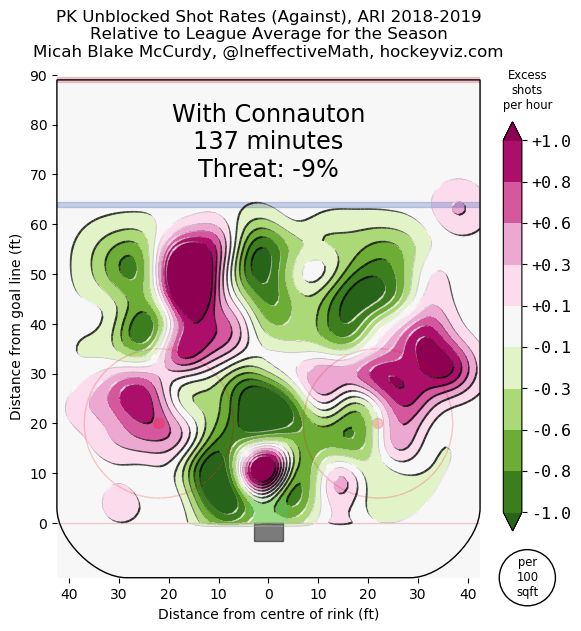
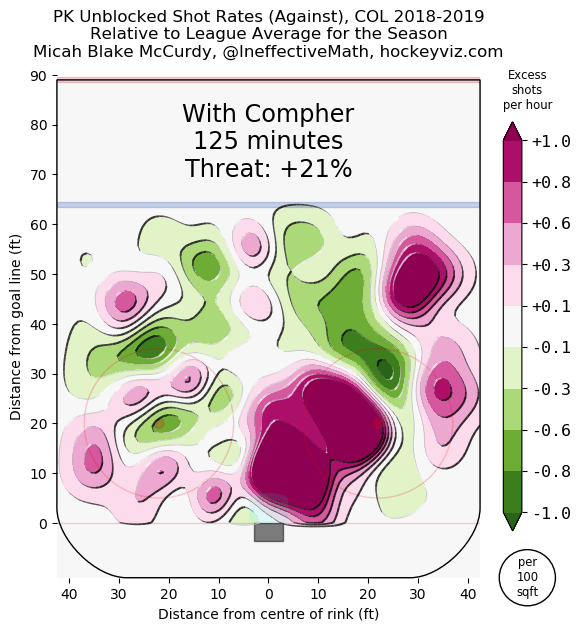
Amid drastic summer changes to the roster, it appears Colorado’s special teams took a hit. The Avalanche lost its top producing defenseman and number one power-play quarterback in Tyson Barrie. Barring an anomaly from Cale Makar on the top unit, the group may struggle to replicate last year’s success.
Inexperience on their retooled penalty-killing units will test Colorado’s coaching staff as they try to coax results out of an overhauled group.
Makar, Zadorov, and Girard, among other special teams hopefuls, elevating into their top special team roles will be key to the Avalanche making the postseason for its third straight year.
Comments
Share your thoughts
Join the conversation




